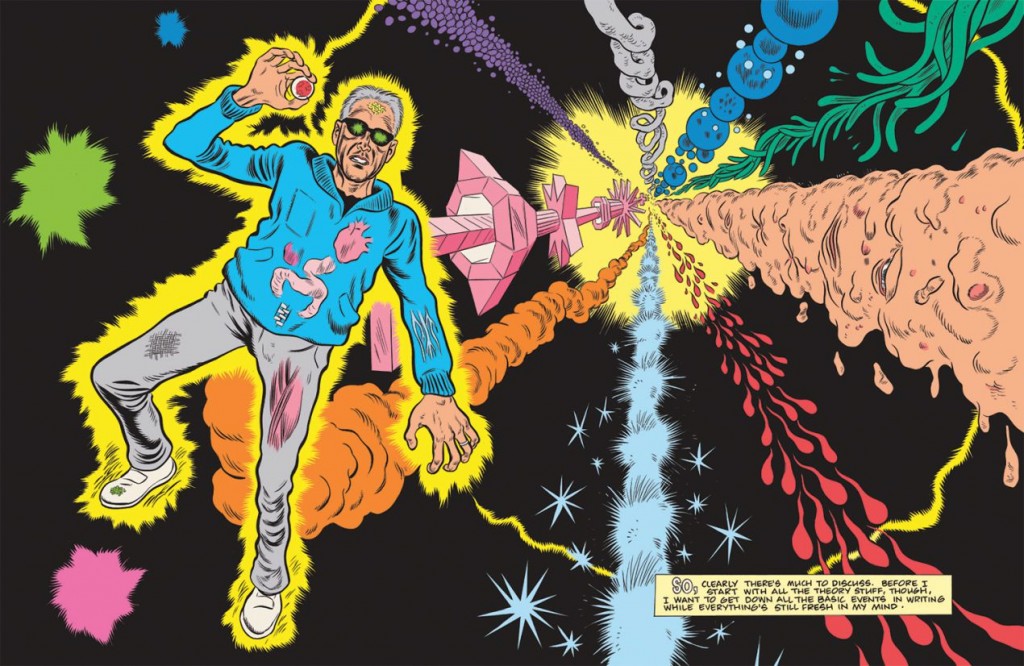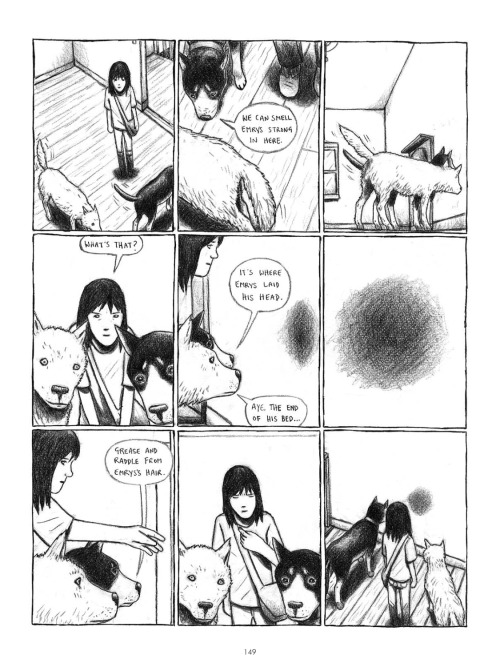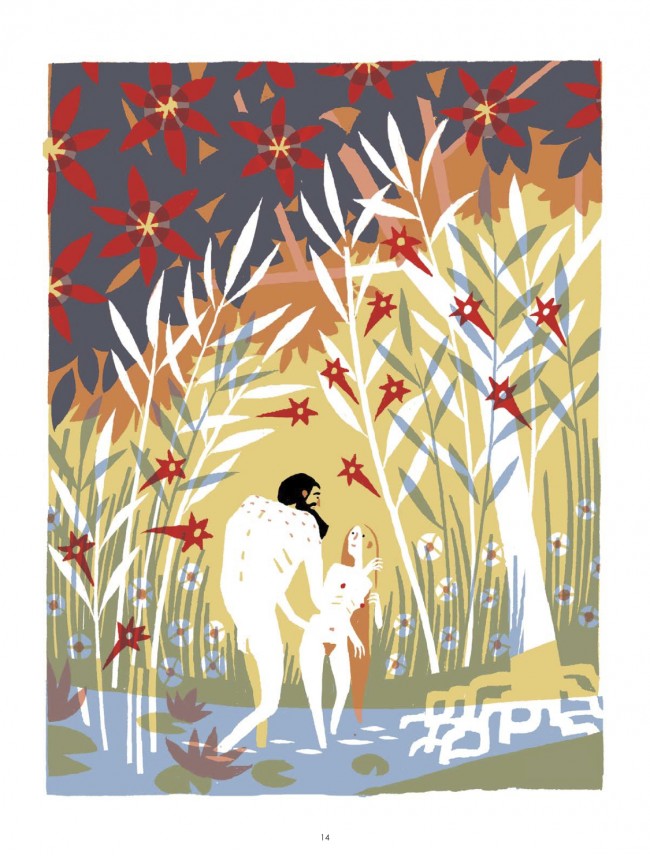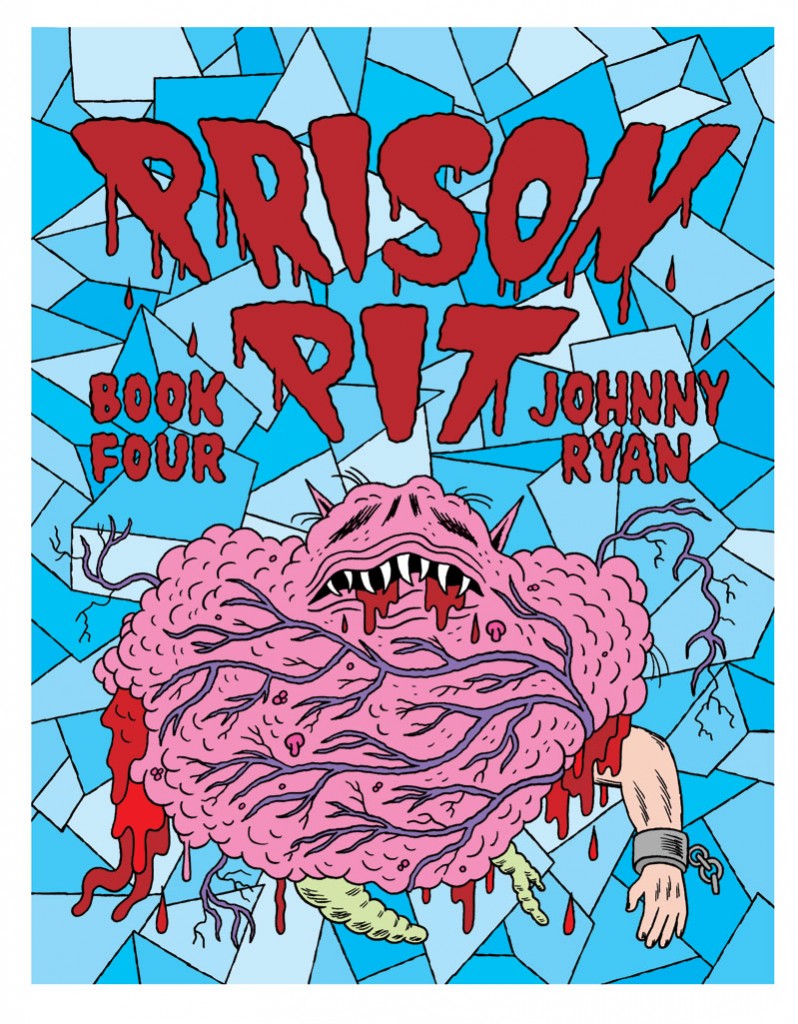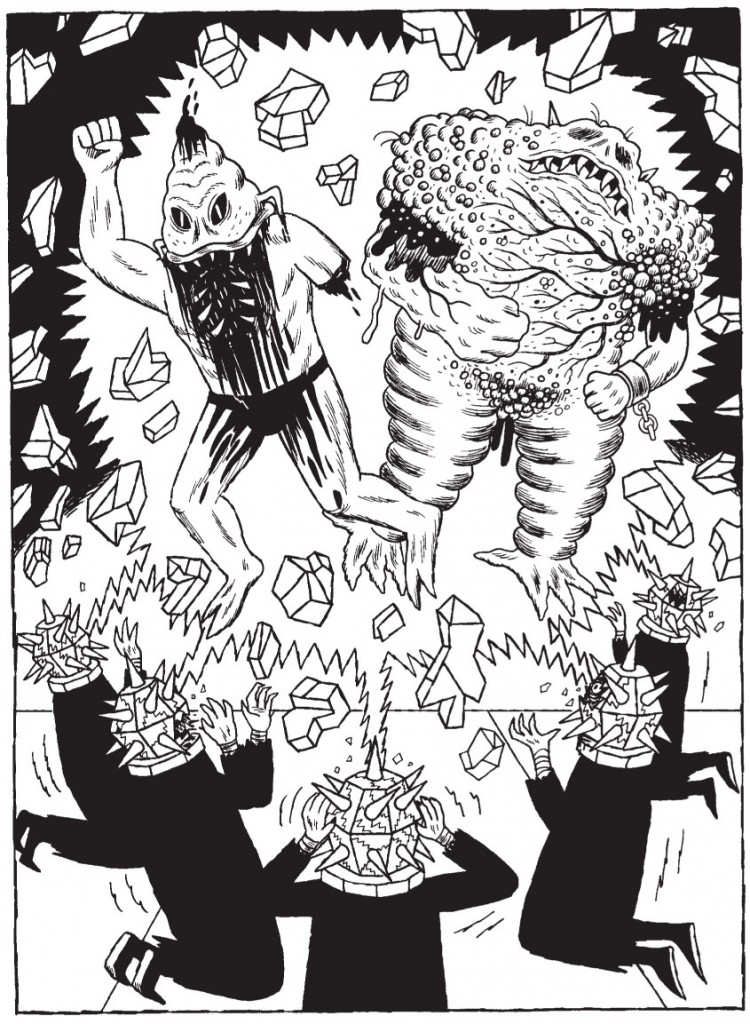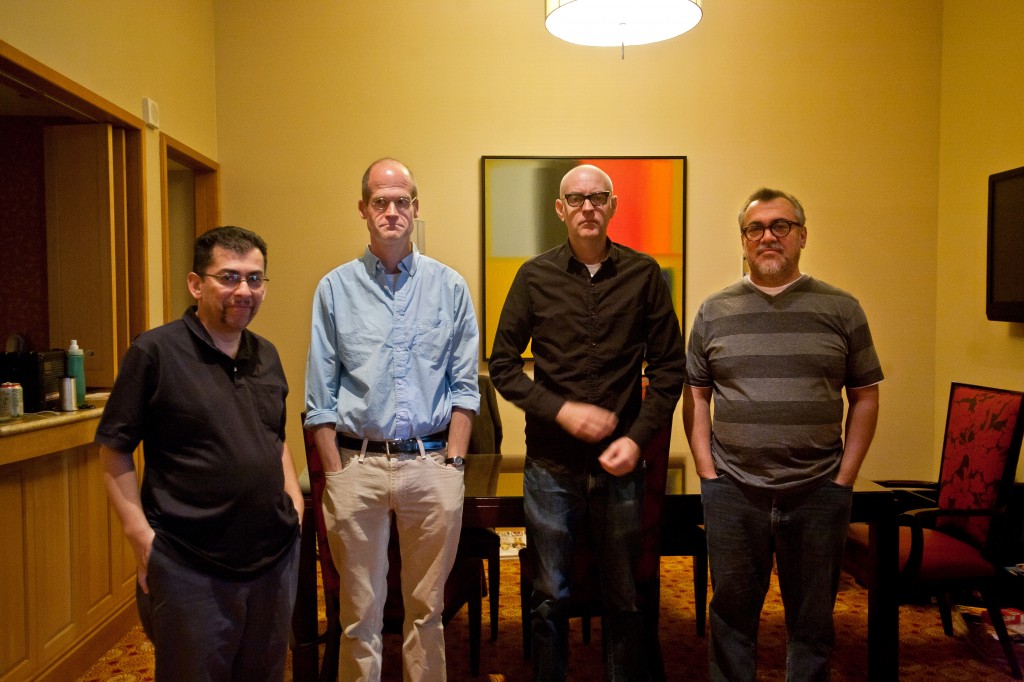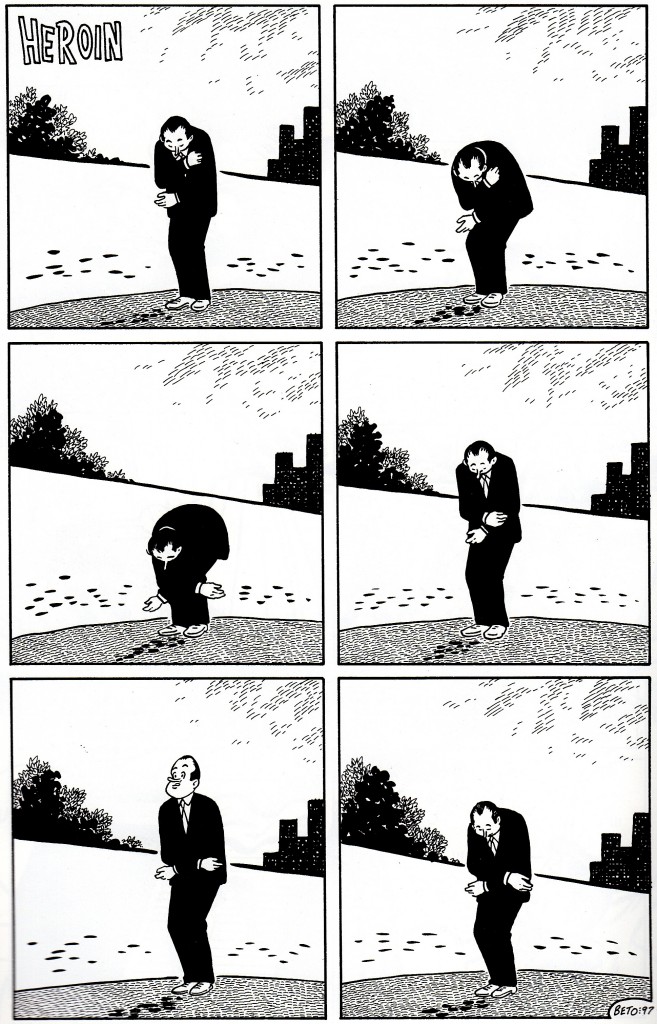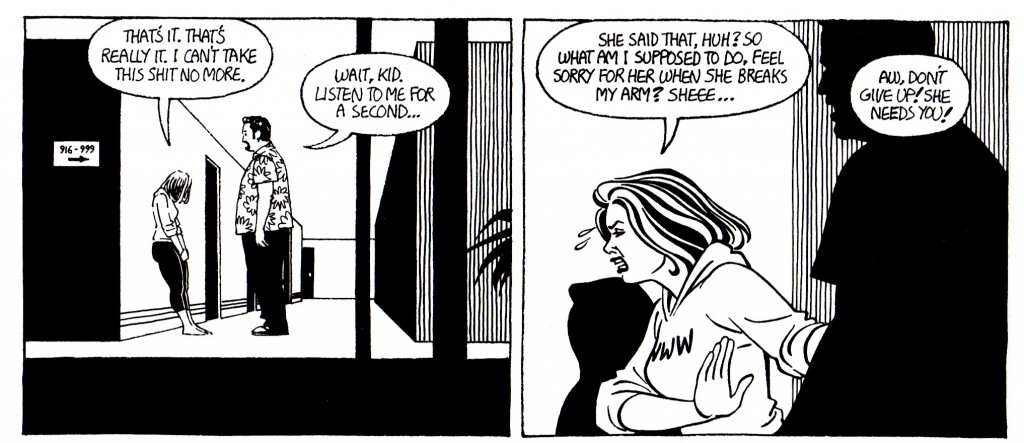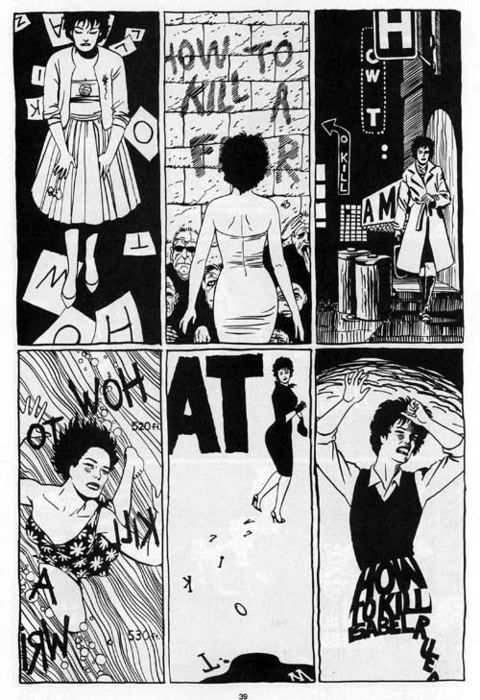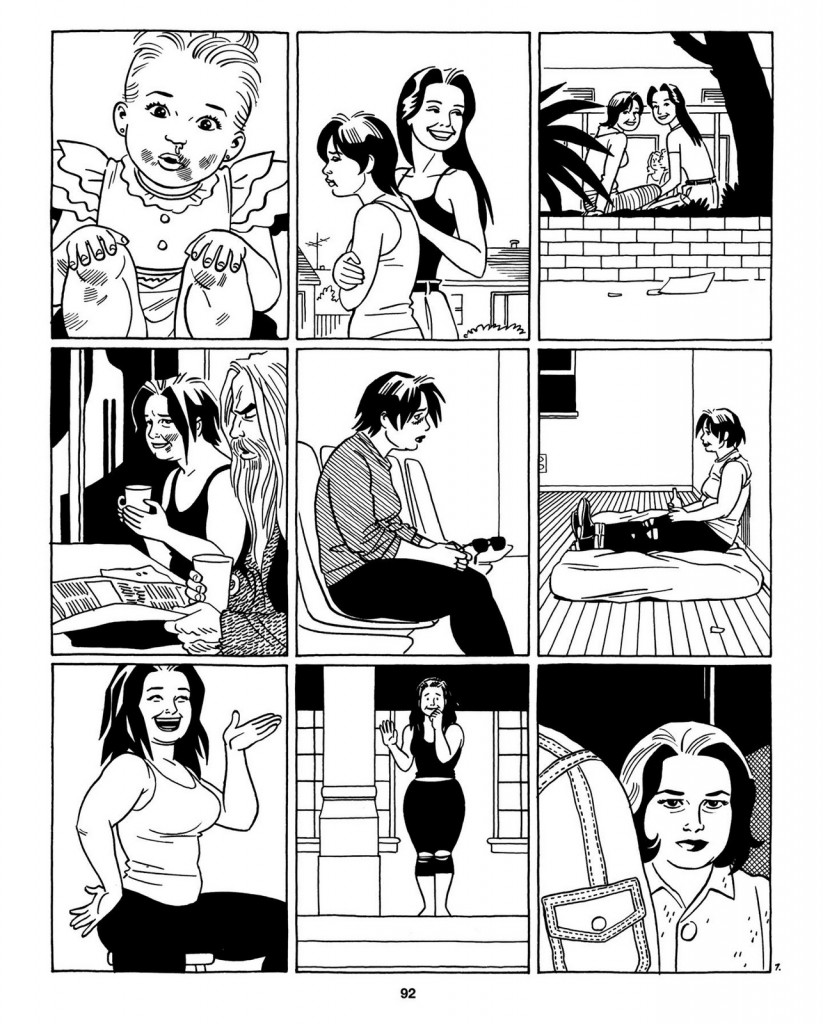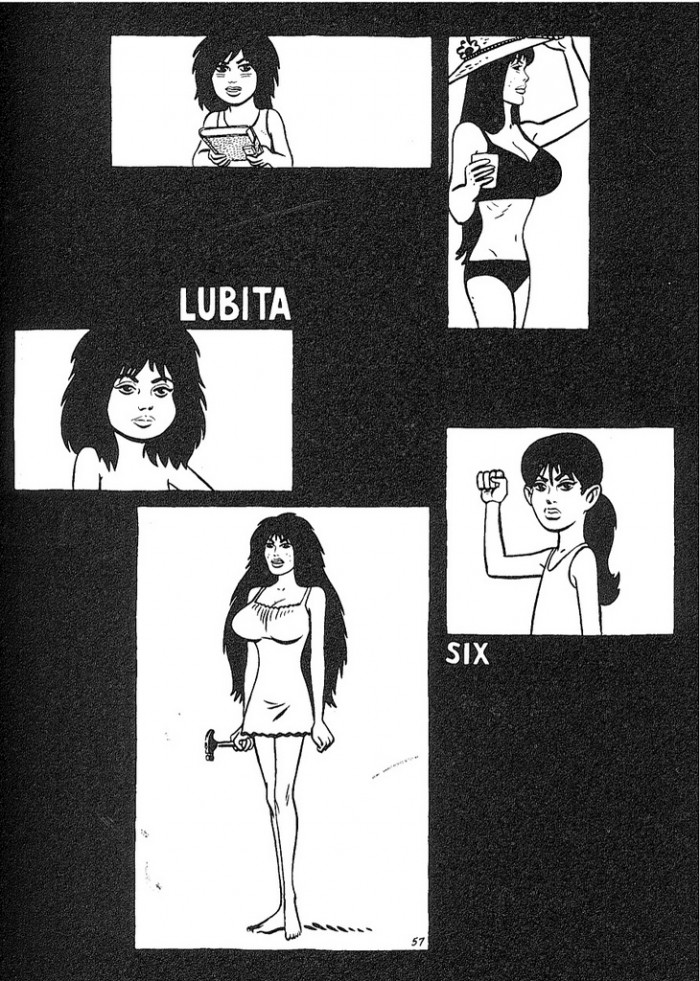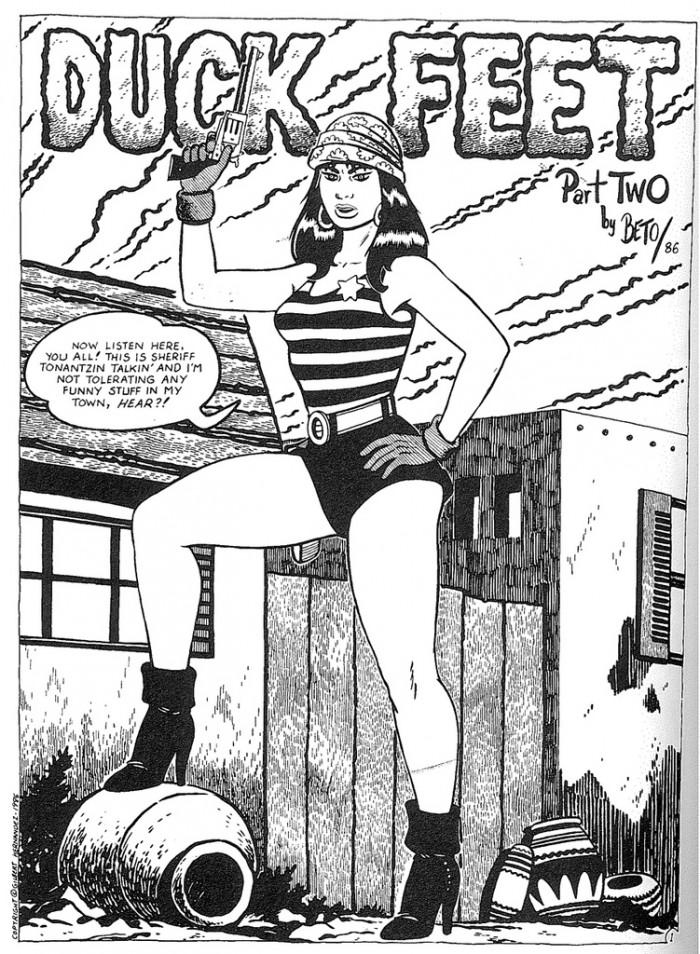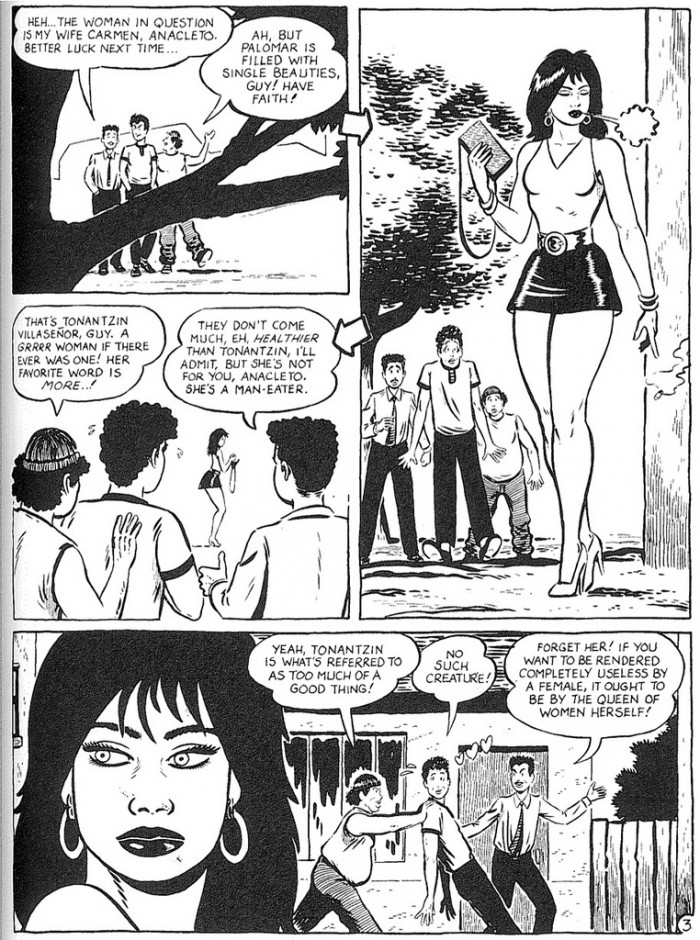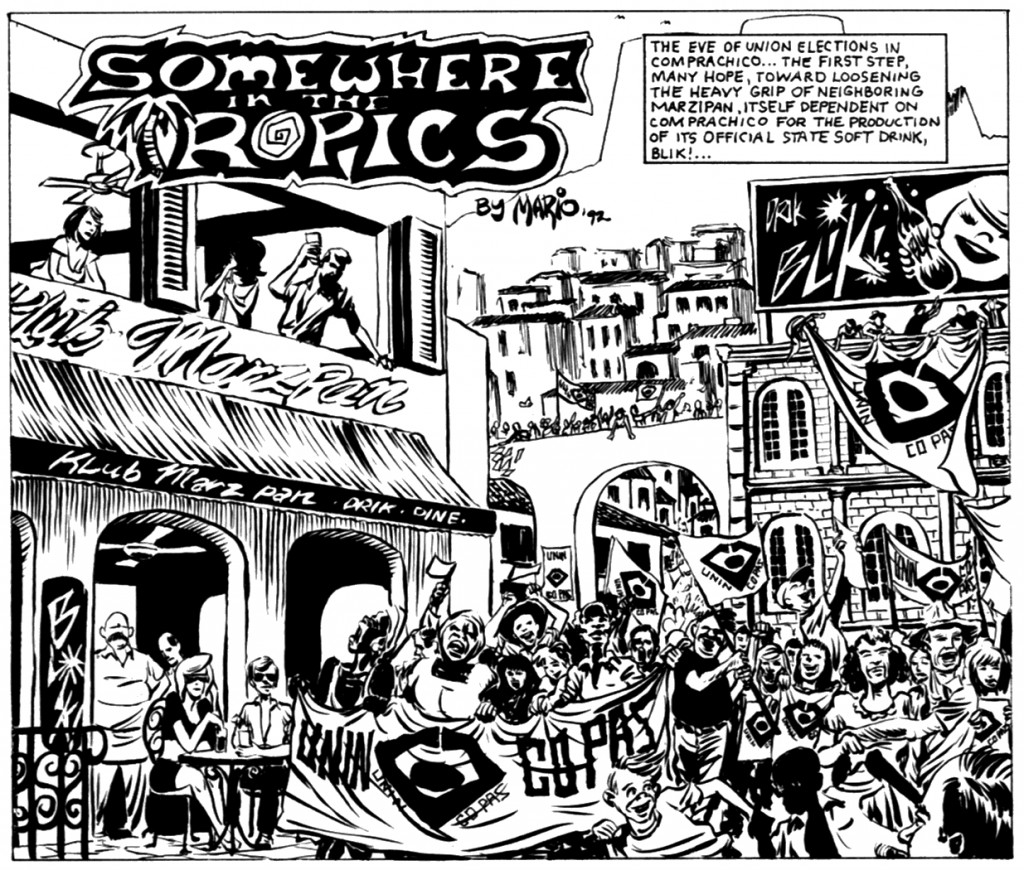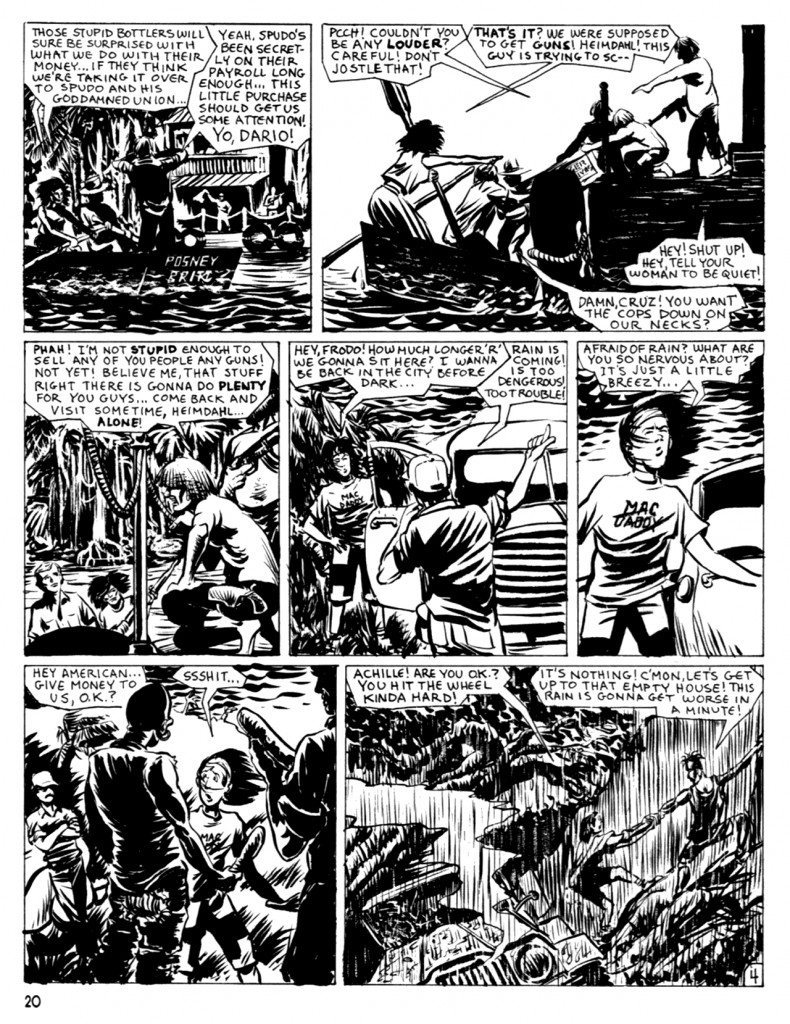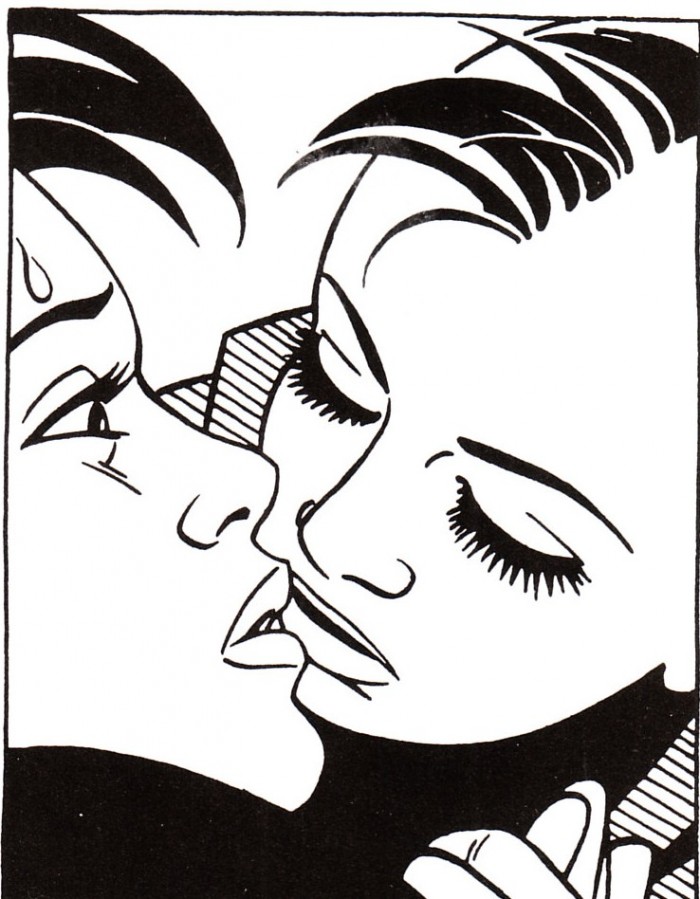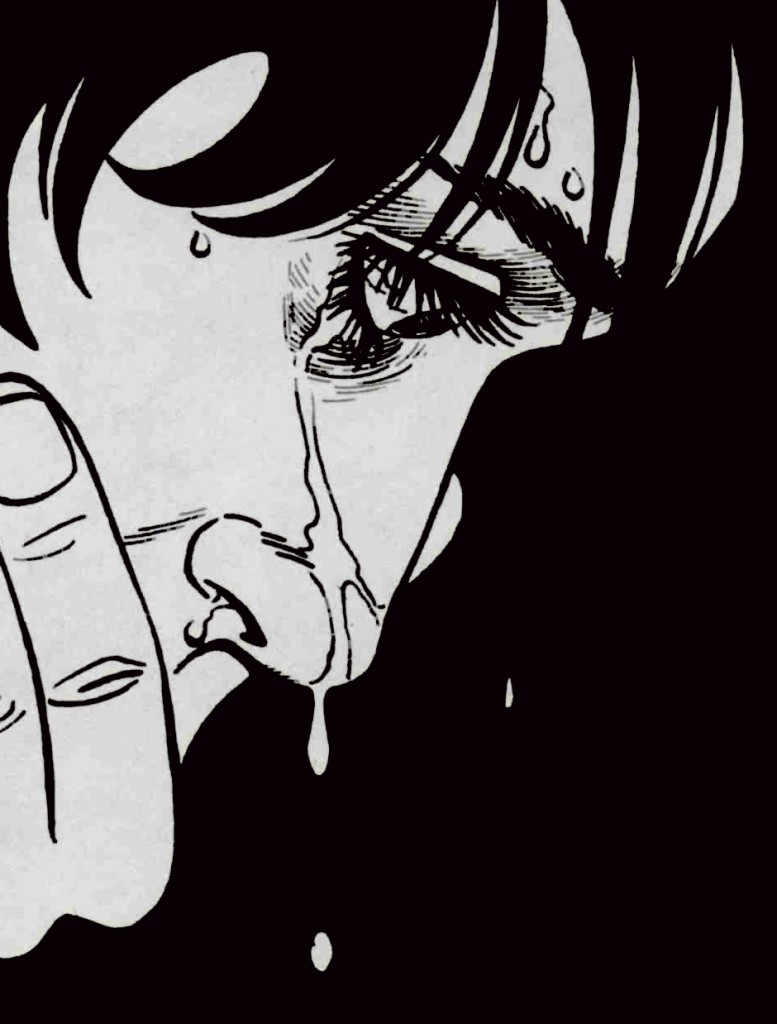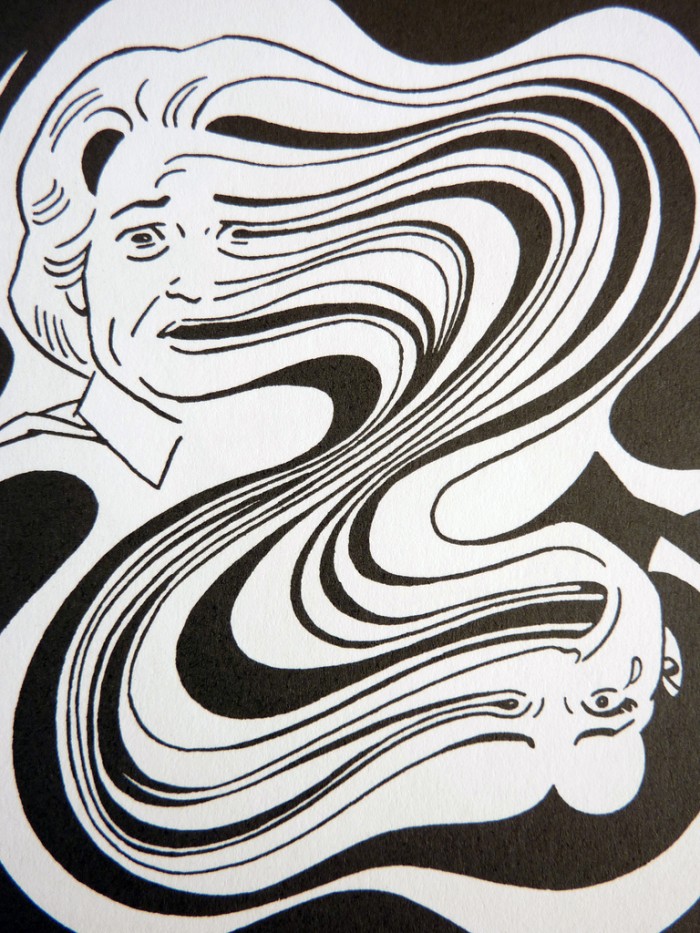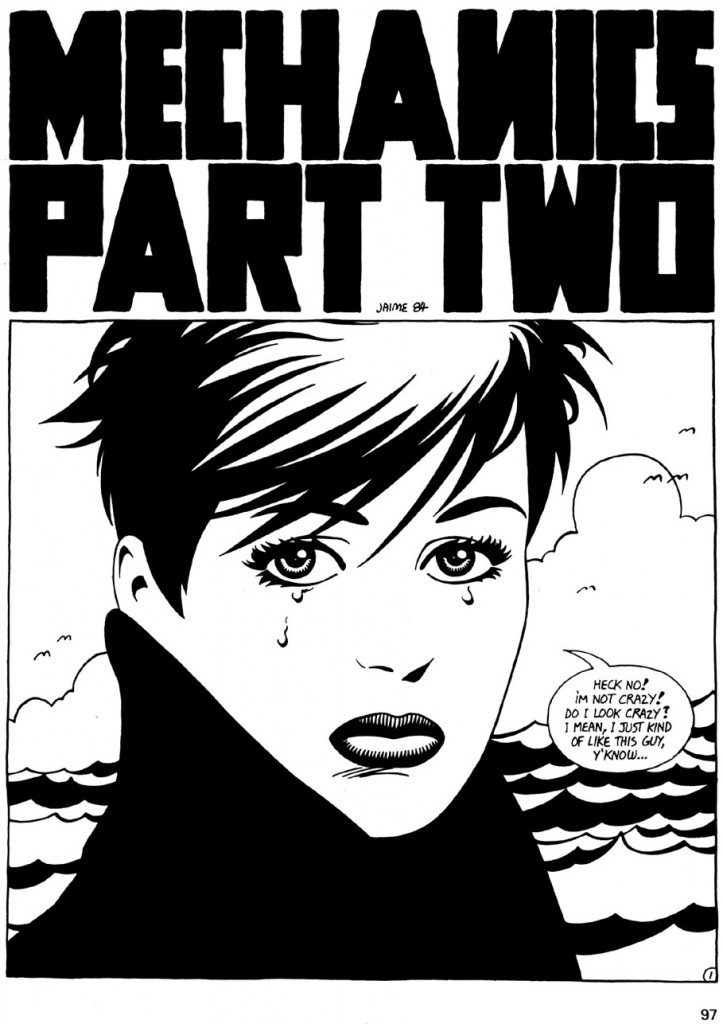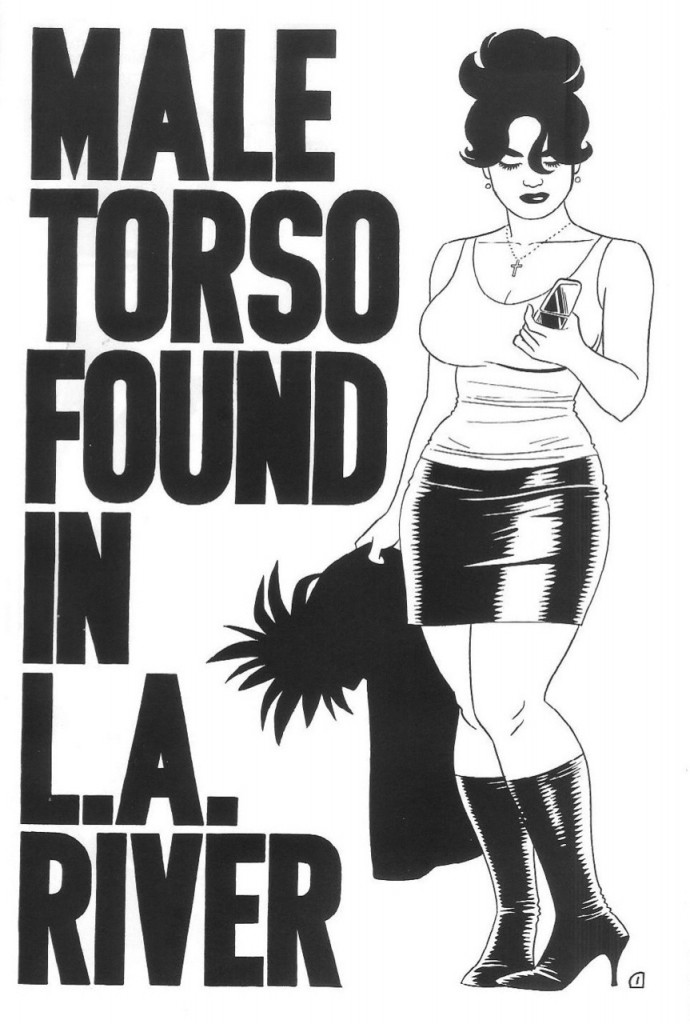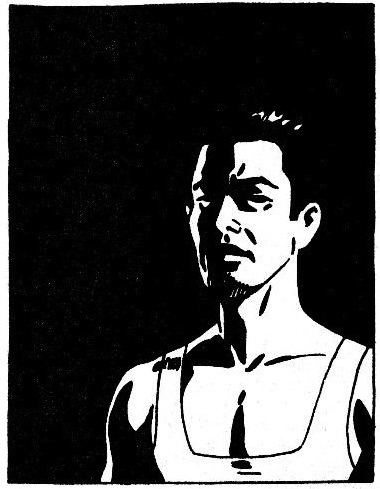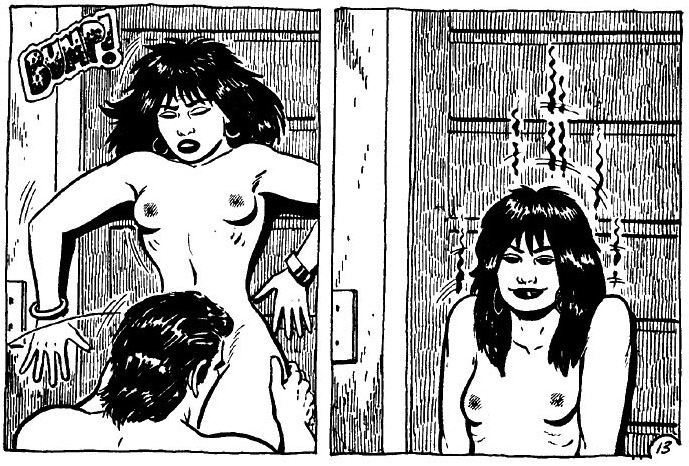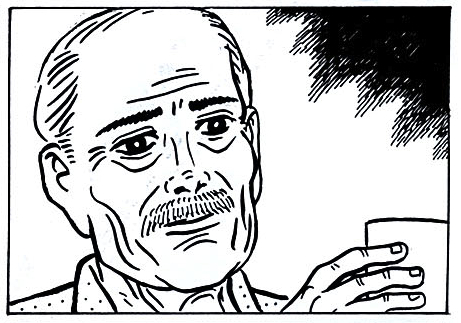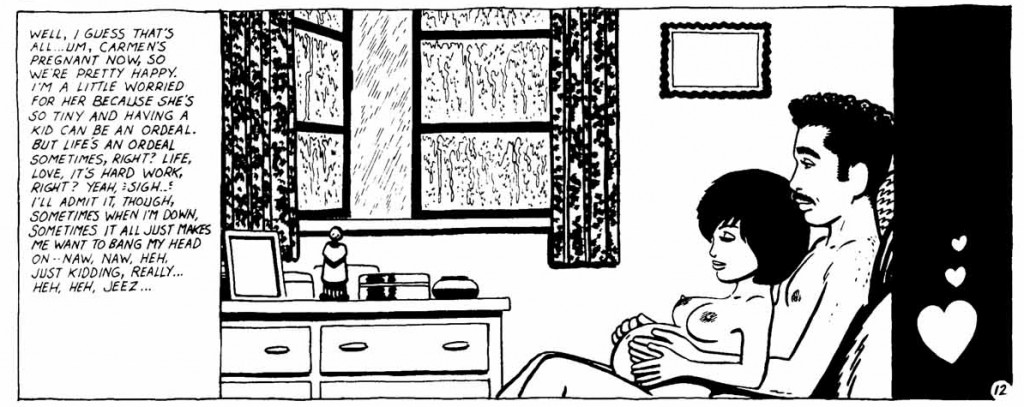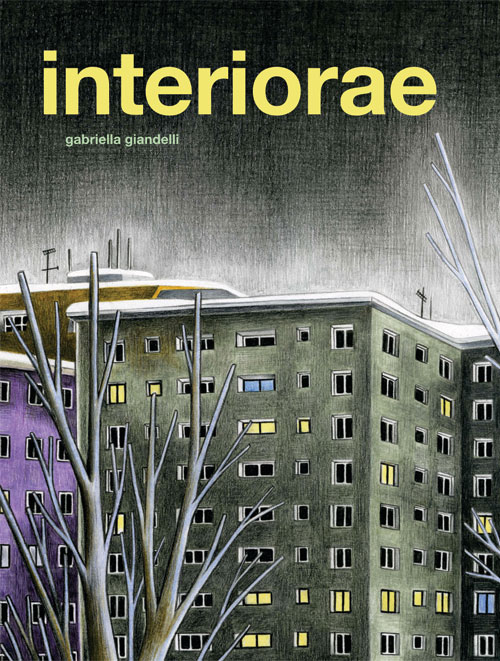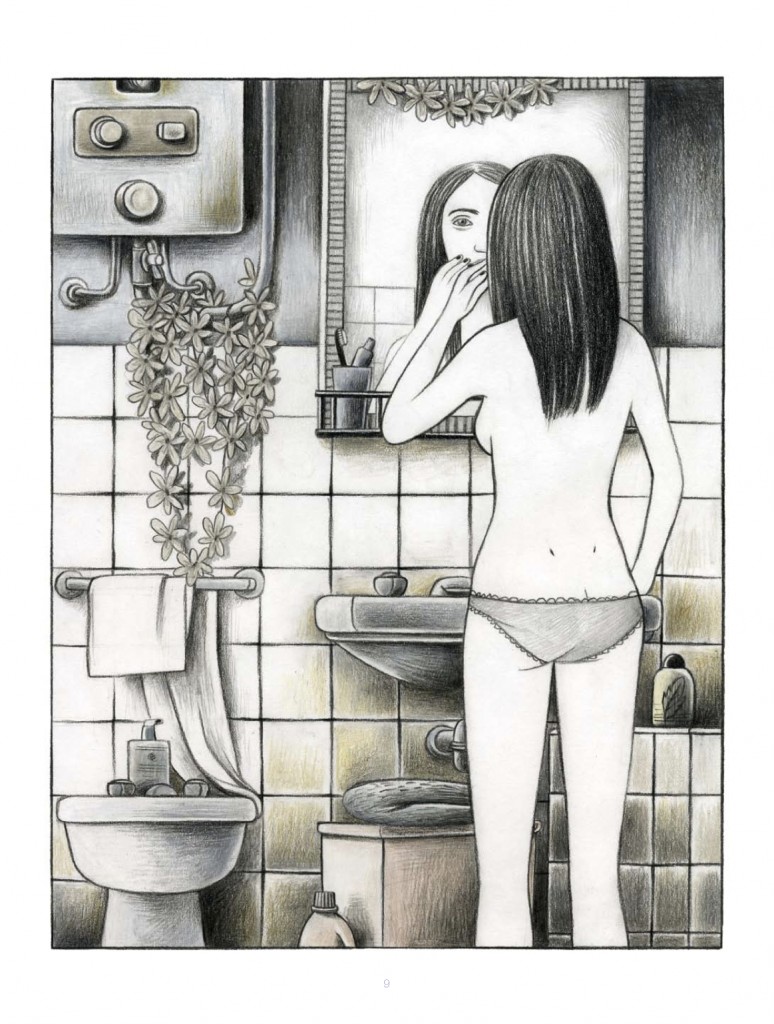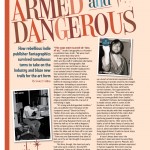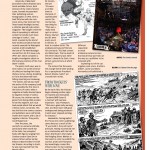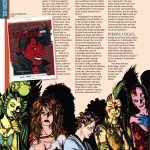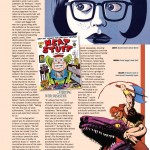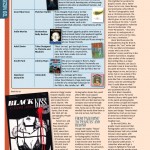Posts Tagged ‘Fantagraphics’
Chapo Trap House/Laid Waste
December 12, 2016Those nice boys of online at the Chapo Trap House podcast had some very kind words for Julia Gfrörer’s new graphic novel from Fantagraphics, Laid Waste, on this week’s episode. Oh yeah, they also interviewed some guy named Adam Curtis, I think he makes movies? Anyway please listen, and visit Julia’s webstore if you’d like to know more.
Let Us Play: Comics Artist Dame Darcy on Her Mind-Blowing “Meat Cake Bible”
August 12, 2016My partner is a cartoonist, and she once said that Meat Cake was hugely important to all the weird girls she knew in her teens and early 20s, but the male comic nerds she met afterwards had no clue what she was talking about. Have you noticed this disparity as well? To what would you attribute it?
That statement brings a tear to my eye, knowing my life’s goal was not in vain. Thank you.
As a kid I hated that even on Sesame Street, everyone was a boy. Actually, I thought Big Bird was a girl, but in the end he was gay and I was mistaken. The only time girls showed up in things was as sex objects — except for Pippi Longstocking and Wonder Woman — and they rarely ever got any good dialogue. Meat Cake set out to change all that, and make something weird and thinking girls could relate to. I felt so alone for so long, and I made a beacon like a lighthouse to shine through the darkness and attract the bats of other like-minded souls.
It is my life’s goal and pleasure to encourage other girls, ladies, anyone to be who they are, to find their true passion and pursue their hearts desire with freedom in their soul despite all odds. In Oz and Cinderella, I always identified as Glinda and the Fairy Godmother, even as a kid. I like how Glinda doesn’t just wave her wand and whisk Dorothy home, even though she could. She gives her glamorous shoes and Dorothy uses them to find her own way. And through magic glamour and DIY elbow grease, Cinderella’s Fairy Godmother turns the normal pumpkin into a couture carriage vehicle to empower the young lady to change her life. If my artwork can be this for someone else, then my will here in this mortal plane is done.
Kramers Ergot 9 Release Party
June 16, 2016In “Patience,” Daniel Clowes Looks for Answers to the Big Questions
March 24, 2016“I wouldn’t be interested in the work of an artist if they didn’t suffer from debilitating anxiety,” Daniel Clowes says. “It’s part of the process.”
Comics Time: Gast
October 23, 2014Murder mysteries are defined by their central, structuring absences. A hole occupies the space where a life once lived. That hole can never be filled. But through an investigation of the facts, an uncovering of the truth, and a pursuit and capture of the killer, we can define and discover the shape of the hole to a degree of accuracy sufficient to put a cover on it, so that the still-living may proceed past it once more.
Gast, a graphic novel of exquisite and accomplished empathy and restraint by alternative-comics veteran Carol Swain, tells a story centered on a hole far harder to close up than most. It proceeds with the methods and mechanics of investigation and discovery. The scene of the crime is visited. The victim’s routine is examined. The friends and acquaintances of victim and suspect alike are questioned. Evidence is recovered and cataloged: a discarded make-up bag, a shell casing, a stain on the bedroom wall. Means, motive, and opportunity are all established.
But there is no crime, because killer and victim are one and the same. There is no pursuit, no arrest, no trial, no conviction, because there can’t be. We don’t so much as see the dead person once — not as a corpse, not in a flashback, not in a photograph. All we have is what is learned by a quiet, curious eleven-year-old girl, Helen, a lover of nature and long walks who must piece together even the most basic of facts about the deceased. At first we don’t even know the deceased is a person: Helen is simply told of a “rare bird” who killed himself nearby, and as a Londoner newly arrived in the rural region of Wales where the story is set and unfamiliar with the antiquated expression, she starts her search looking for an actual bird. Like the pages of the ever-present journals, Helen starts with a completely blank slate. Over the course of many long wordless walks and quiet conversations with both her human and, mysteriously, animal neighbors, she slowly fills the tabula rasa with discoveries: suicide, gender dysphoria, the allure and peril of solitude, and the life and death cycle of this farming community and its inhabitants. She learns that most adult of lessons: We each of us have roles we play in the lives of others, shapes we take in their worlds—shapes that can be integral to those lives’ landscape yet still not save us.
Comics Time: How to Be Happy
July 24, 2014The first moment — but certainly not the last — that made me stop reading How to Be Happy, turn back the pages, and immediately re-read them came early. “In Our Eden”, the lead-off piece in Eleanor Davis’s masterful new collection of short stories, concerns a back-to-nature commune driven to dissent and dissolution by its founder’s purity of vision. Some members chafe at the convention by which every man is called Adam, every woman Eve. Others fall away when the leader, a towering and barrel-chested figure with a ferocious black beard like something out of a David B. comic, takes away all of their prefab tools. The rest depart when he insists they neither farm nor kill for food, literalizing and reversing the Fall’s allegory of humanity’s move from hunter-gatherer to agrarian societies. At last it’s just this one Adam and the Eve he loves. By the next time we see them, Adam’s gargantuan physique has been pared away, his ribs visible, his nose reddened for a sickly effect, demonstrating Davis’s remarkable ability to wring detail and expressive power out of the simple color-block style of the piece. He comes across Eve, nude and stork-skinny, washing her long hair in a river. He goes to her, nude himself. “I’m ready for the bliss to come,” he says right to us in one of the recurring panels of first-person narration that have been peppered through the comic. They embrace. “I’m ready for the weight to lift.” They kiss.
I turned the page, curious as to how the story would end. Some final irony? Some subtle but biting indictment of utopian folly? A widening of the view to deny the lovers centrality in their world? None of the above: the story had already ended. The build-up I’d read into it — a crescendo of extremism that would end with Adam’s hubris exposed and exploited — didn’t exist. The easy climax, the stacked-deck scenario so common in stories about true believers in which author and audience get over at the expense of the characters when the latter are made to look foolish for foibles the former recognize instantly, never comes. The climax had come two pages before, when I turned from one page to the next and reached a splash-page image of the moment when Eve turns to see her Adam. This moment of connection is the story’s resolution. The use of Adam and Eve’s human bodies to communicate to one another, to seek the bliss that’s coming, to lift that weight, is the image Davis wants us to leave with. No moral, no punchline, no muted epiphany — discarded along with all the other distractions, they leave only Edenic bliss behind.
I reviewed Eleanor Davis’s masterful comics collection How to Be Happy for The Comics Journal.
Fantagraphics and PictureBox
December 4, 2013Fantagraphics is the greatest comics publisher of all time. No company, in any field, has made products that mean more to me than Fantagraphics’. Their co-publisher Kim Thompson died too young and took a lot of counted-on revenue with him, so they launched a Kickstarter that’s in its final hours right now. The rewards are almost parodically plentiful, varied, and worthwhile; I’ll be getting a customized pair of Chuck Taylors, naturally. I urge you to give if you haven’t already — it’s basically shopping, not giving, but either way, the company that basically created alternative comics could use your help.
PictureBox is the greatest comics publisher of the 21st century. Any one of several projects published or edited by publisher Dan Nadel would make him and PBox a publisher for the ages: the work of Japanese experimentalist Yuichi Yokoyama or prescient Providence art-comics collective Paper Rad, editing the canon-disrupting classic-comics collection Art Out of Time or the paradigm-shifting magazine of alt/genre comics criticism Comics Comics. PBox also did a huge service for alt/art comics by situating them in the larger context of visual culture — in publishing collections by everyone from Richard Kern to Hipgnosis to the Hairy Who to Destroy All Monsters in addition to the best-ever books by, say, Brian Chippendale and Renee French, Nadel was making a case for commonalities that might otherwise have gone un-remarked upon. Now Dan’s closing up shop to take a more stable full-time job in the book world, so PictureBox is having an inventory-liquidating 50% off sale on everything it sells. I put together a quick list of some of the publisher’s more narratively straightforward works for a friend who was looking for recommendations along those lines.
POWR MASTRS: I suspect this seminal CF series is destined to be forever unfinished, at least in terms of its original conception as an eight-volume epic or something, but it’s basically an NC-17 Adventure Time.
COLD HEAT: Another Unfinished Symphony, though much less dramatically so; in fact you’re better off skipping the final double issue, which makes this weird huge tonal shift away from the rest of it, the rest of it being “What if someone transformed Loveless by My Bloody Valentine into a young-adult fantasy?” Co-creators Frank Santoro and Ben Jones were tentpole PictureBox franchises.
KRAMERS ERGOT 8: In some ways this is the least innovative of the super-duper-influential Kramers anthologies edited by Sammy Harkham, even the least successful, but it’s the most straightforward in terms of the emphasis on nice lengthy narratives from the contributors, and the most thought-provoking in terms of trying to suss out what was included and why, and the coolest-looking in terms of that far-out ’70s science-textbook look.
NEGRON: A great little showcase of the comics and pin-ups of the postmillennial Vaughn Bode.
EVERYTHING TOGETHER: This is a collection of all the short stories by Sammy Harkham, an alternative cartoonist in the grand Fanta/D&Q tradition.
GARDEN: There’s no story here, per se — it’s just a bunch of people in strange costumes navigating an enormous manmade amusement-park-like garden complex and discussing what they see. But Yuichi Yokoyama’s art is just super super appealing to me — he makes every movement seem as dynamic as a Jack Kirby spread, and the overall effect is like going on a strange guided tour of a depopulated Super Mario Galaxy.
It’s worth contemplating how the death of Kim Thompson forced Fantagraphics to crowdfund its continued existence, and how a life change on Dan Nadel’s part shuttered PictureBox entirely. The alt/art comics infrastructure depends on the heroic efforts of individuals; lose them and the loss can rarely be weathered, with the recent shift of the Brooklyn convention currently called CAB to an exclusively Gabe Fowler-run enterprise from one he shared with Nadel and Bill Kartalopoulos being a rare counterexample.
That said, altcomix is very good at rising from the ashes. Tom Devlin’s Highwater Books, the most direct aesthetic antecedent for PictureBox in terms of their books’ high-end design flourishes and signal-boosting of the Fort Thunder/Providence scene, spawned any number of publishers after it folded: Secret Acres and Bodega Books were both founded by former Highwater employees, Devlin himself went on to partially Highwaterify Drawn & Quarterly, and so on. Dan keeping the doors open at PBox long enough to place as many of his artists and projects with other publishers as possible tells you an awful lot about the quality of his character as well. So, we shop, and we hope.
Three deaths
June 21, 2013Kim Thompson was one of the very best people in the history of comics, in every way that “one of the very best people” could be meant. He would be a hall-of-fame editor if all he ever did was get Jacques Tardi and Jason across to North American audiences, and of course he did so much more than that. As the co-publisher of Fantagraphics he was 50% of the greatest comics publisher of all time; without him I would not be doing what I do for a living, in a very real way. His editorial eye, his multilingual translation capabilities, even his jocularly merciless presence in comment-thread debates are irreplaceable. I will miss him, and my heart goes out to those lucky enough to know him better than I did.
Michael Hastings was a fearless reporter who actually damaged the war machine, the highest calling of humanity. I didn’t know him but know and work with many people who did, and to hear them talk about how kind and inspiring he was on a person-to-person basis, quite aside from the importance of his work, has just given me chills. I hope those who knew him and loved him can draw some comfort from the incontrovertibly powerful and positive impact he had on people and the world.
James Gandolfini gave the greatest TV performance of all time on the greatest TV show of all time. He was an absolute marvel of an actor; I can’t think of another performance that influences me on a day to day basis years after watching it like his does. I can hear him say the words “Agent Harris!” like he just said them in my ear; I imagine him reacting to the world to this day, like sharing his enthusiasm for “Game a’ Trones” or something similarly inconsequential, since as an actor he knew that’s where the consequential stuff would emerge. He created a human, and launched a new golden age, and again, I would not be doing what I do but for his work.
Each of these people is an enormously practical loss. Each of them did things that now simply won’t get done. A huge blow to all of us.
Comics Time: Mark of the Bat by Josh Simmons
April 3, 2013Kim Thompson
March 6, 2013I just read the news that Kim Thompson, co-publisher of Fantagraphics since time immemorial, has been diagnosed with lung cancer; this basically just happened, so there’s no prognosis yet.
Kim, you are the fucking best — a true hero to me. I wish like hell I could have an iota of the impact on my art form of choice that you’ve had, yet remain as approachable and articulate as you have. Get well, be well, good luck.
Comics Time: Prison Pit Book Four
February 7, 2013Prison Pit Book Four
Johnny Ryan, writer/artist
Fantagraphics, 2012
116 pages
$12.99
Buy it from Fantagraphics
Buy it from Amazon.com
For today’s Comics Time review, please visit The Comics Journal.
The Four Horsemen
September 26, 2012I interviewed Jaime Hernandez, Chris Ware, Daniel Clowes, and Gilbert Hernandez for Rolling Stone. Comics game Mount Rushmore.
(photo by Meredith Rizzo)
Your Love and Rockets 30th Anniversary thought of the day
July 15, 2012Gilbert and Jaime are both masters of the form of comics. That’s in addition to their character work, their sheer illustrative chops, and so on; indeed it may be the most exciting thing about them. In the case of both brothers I’ve spent a long time chewing over just a few handfuls of panels, unpacking what went into them. Here’s Gilbert’s silent, six-panel comic “Heroin,” one of three one-page shorts he made with that title. It’s just a man against one of Beto’s soon-to-be-trademark dismal nowherescapes, clutching his arm, doubling over, standing back up, hunching over again. We don’t know who he is or where he is or what he’s doing or what its connection is, specifically, to the titular substance — he could be a junkie on the nod, sure, but then why is he also Richard Nixon (or maybe it’s Bob Hope)? Whether it’s about the drug specifically or addictive, destructive influences generally (as are the other two “Heroin” strips) doesn’t really matter, since the effect stems almost entirely from the building blocks of the comic itself: the man, the background, the grid layout, the lack of any text save the title, the rhythm that builds up as we watch his body contort, the three big blocks of black in each panel (trees, man, buildings), the hands pointing in opposite directions, the diagonal hill line bisecting each panel. Every element combines to convey discomfort and unease, the sense of being at the mercy of something that lets you straighten out just long enough for it to be crushing when it knocks you back down. Long before I’d actually read any comics by Los Bros I saw this page reproduced in an issue of The Comics Journal and it has worked its way into the fabric of my comics brain ever since. It occurred to me just the other day that I’ve even done a homage to it without realizing it. I think it’s a perfect comic.
And here’s two panels from “In the Valley of the Polar Bears” by Jaime. Maggie’s been working as the kayfabe “accountant” for her wrestling-champ aunt Vicki, something of a terror in and out of the ring, but the two are barely speaking. Vicki has just confided in her wrestler boyfriend Cash that the reason she’s been treating Maggie so badly is because she cares about her a lot and is hurt by Maggie’s seeming indifference in return. So here, Cash approaches Maggie to tell her about her aunt’s secret soft spot — and then blam, next panel, it’s already been told. Jaime doesn’t show us the conversation. He doesn’t slap a big “Five minutes later…” caption up there. He doesn’t alter the size of the panels or the gutters to imply the passage of time. He doesn’t cut to another scene in between. He doesn’t show Maggie and Cash in another location so that we’d know time must have passed for them to get from place to place. He zooms in a bit but other than that they’re even in the same basic spatial configuration. He pretty much breaks every rule of how jumps in time are conveyed in comics, and yet it’s still crystal clear what happened. Talk about no-fat storytelling. Why belabor the re-presentation of information we readers already have? And why monkey with shit to explain what you’re not showing us when you can simply not show it to us and assume we’re smart enough to follow? These two panels are so bold, so full of lessons in how to tell a story with comics. I think about them all the time.
Love and Rockets, the great serial comic by Gilbert, Jaime, and sometimes Mario Hernandez, is celebrating its 30th anniversary at the San Diego Comic-Con International this week. Inspired by Tom Spurgeon, this week-long, daily series of posts will highlight some of my favorite things about Los Bros Hernandez and their comics. For more information, click here.
Your Love and Rockets 30th Anniversary thought of the day
July 14, 2012Gilbert and Jaime Hernandez have each been telling the stories of the same group of characters, continuously, for three decades. They’ve done lots of other stuff, Gilbert especially, but that’s the bulk of what they’ve done. No one else in comics has done it. No one’s even come close. Could someone else do it? Could someone else tell the life story of their characters, over an actual life span, and have a lot of people care passionately about where those lives end up? I won’t say it’s unimaginable, the idea of someone else doing it, because there are enough similar cases out there for you to imagine those other people doing it, and it’s only then that the gulf between Los Bros and everyone else becomes so clear. What if Bryan Lee O’Malley just kept going with Scott Pilgrim until he hit Vol. 30? What if Dave Sim had never lost his mind? What if all the B.P.R.D. spinoffs were written and drawn by Mike Mignola? What if Achewood were a comic book and Chris Onstad never burned out on it? What if Erik Larsen’s main touchstone for Savage Dragon were Márquez rather than Kirby? What if The Walking Dead were filled with Rick-level characters, instead of Rick and a bunch of other people for Rick to react to? What if Alison Bechdel made a series of Dykes to Watch Out For graphic novels instead of memoirs? What if Harvey Pekar had made stories up instead of writing them down? What if all of these things lasted for thirty years? And oh yeah, what if all of these people had siblings doing the exact same thing at the same time under the same title? It’s only when you see all the hoops one would have to jump through even to come close to what Beto and Xaime have accomplished that you really appreciate that hey, they’re the ones who built the hoops.
Love and Rockets, the great serial comic by Gilbert, Jaime, and sometimes Mario Hernandez, is celebrating its 30th anniversary at the San Diego Comic-Con International this week. Inspired by Tom Spurgeon, this week-long, daily series of posts will highlight some of my favorite things about Los Bros Hernandez and their comics. For more information, click here.
Your Love and Rockets 30th Anniversary thought of the day
July 13, 2012Any character in Love and Rockets stands a decent chance of being my favorite on any given day, because they are designed to be contemplated, and I’m the contemplative type. Today I’m thinking a lot about Tonantzin, one of the stars from Gilbert’s Palomar stories. She’s a stunningly hot small-town girl, so her rebelliousness first manifests itself by dressing provocatively and using sex to self-actualize. But her mind, heart, and psyche are all as dangerously overdeveloped as her body and sensuality, she gets swept up in a series of increasingly destructive obsessions, first with America and Hollywood, then with native culture and political protest, then with the danger of militarism and the possibility of nuclear annihilation. We can see that they all provide her with an emotional and intellectual way out of the confines of Palomar and her own body — indeed things start getting really bad when she’s taught to read — but because he never really describes it as such, we never realize how far she’s willing to go until it’s too late. Ultimately she comes to believe the only truly free intellectual and political act is to destroy the body she came in. It’s an unforgettable and utterly unique portrait of how good ideas and good people can nevertheless combine into something very bad. It’s a lesson that life entails losing vibrant, lovely people you neither want nor expect to lose. It’s a tragedy for a young woman and the people who love her. It’s a commentary on the hopelessness of the political climate of the day. Today I find myself wondering whether if she’d grown up in Hoppers instead of Palomar, and had punk and the Locas as a release valve instead of abnegative protest, would she still be alive today? On the flip side, would Speedy Ortiz still be alive if he’d grown up in Palomar instead of Hoppers, in a place where it was easier to form romantic relationships and harder to form ones based on a shared propensity for collective macho violence? This is the kind of thing you could do all day long with character after character after character from both Gilbert and Jaime. They’re drawn to be viewed from all angles.
Love and Rockets, the great serial comic by Gilbert, Jaime, and sometimes Mario Hernandez, is celebrating its 30th anniversary at the San Diego Comic-Con International this week. Inspired by Tom Spurgeon, this week-long, daily series of posts will highlight some of my favorite things about Los Bros Hernandez and their comics. For more information, click here.
Your Love and Rockets 30th Anniversary thought of the day
July 12, 2012Mario Hernandez is the great lost alternative cartoonist, the Lost Bro Hernandez. His interest in cosmopolitanism, leftist politics, the conflation of activism and terrorism by the authorities, the pas de deux between terrorism and authoritarianism, the revolutionary and counterrevolutionary power of art and pop culture, the Third World as a petri dish for first-world government’s reimportation of radicalism, all within the framework of vaguely science-fictional thrillers — he is in many ways the perfect comics-maker for our present moment. With its heavy use of blacks his style sits comfortably alongside those of his brothers, but its density and its bold slashing brushstrokes set it completely apart. If he’d had the time or inclination to produce the same volume of work, published with the same regularity, as his brothers, we’d likely have a third pantheon-level creator from the same generation of the same family, an astonishing thing to contemplate. As it stands we have a hidden treasure, a single gem in a stack of gems, and that’s not so bad either.
Love and Rockets, the great serial comic by Gilbert, Jaime, and sometimes Mario Hernandez, is celebrating its 30th anniversary at the San Diego Comic-Con International this week. Inspired by Tom Spurgeon, this week-long, daily series of posts will highlight some of my favorite things about Los Bros Hernandez and their comics. For more information, click here.
Your Love and Rockets 30th Anniversary thought of the day
July 11, 2012Jaime Hernandez is comics’ greatest maker of standalone images. His blacks, his typography, his sense of style, the drama of his line, the sense of balance and momentum even within a single image, his use of powerful moments to convey character, the whole nine. Out of all his peers in the ’80s and ’90s alternative comics movement — the stuff I think of as High Alt, the solo anthology series cartoonists who eventually coalesced around Fantagraphics and Drawn & Quarterly, Xaime and Beto and Ware and Burns and Clowes and Brown and Doucet and Bagge and Tomine and Sacco and Woodring and French — his makes him uniquely suited for the Tumblr era, when the rebloggable, context-free image is king. As such he stands the best chance of elbowing his way into the new canon currently being established as a reaction against High Alt and its forebears, consisting mainly of high-impact, visually dazzling genre comics whose work thrives in a one-at-a-time context — Kirby and Moebius and Otomo and Miller and Chaykin and Manara and pre-alt Mazzucchelli and McCarthy and Graham. But his best images often come within the flow of a story in addition to pin-ups, posters, covers, and title pages, and his interests broaden the canon-of-spectacle beyond solving problems through violence and/or sexy stylishness. They work equally well as vehicles for devastating emotional reveals, or as t-shirts.
Love and Rockets, the great serial comic by Gilbert, Jaime, and sometimes Mario Hernandez, is celebrating its 30th anniversary at the San Diego Comic-Con International this week. Inspired by Tom Spurgeon, this week-long, daily series of posts will highlight some of my favorite things about Los Bros Hernandez and their comics. For more information, click here.
Your Love and Rockets 30th Anniversary thought of the day
July 10, 2012Outside of erotica and autobiography, no cartoonist has ever woven sex so indissolubly into the fabric of his comics as Gilbert Hernandez, in a fashion reflective of lived experience. In all of fiction comics, only writer Alan Moore comes close. This goes beyond simply drawing hot people, although before unfortunate circumstances intervene, Tonantzin and Khamo are probably the hottest woman and man in all of comics. Gilbert’s ability to describe and depict physical attraction between his couples frequently makes for the sweetest and most romantic aspects of those relationships—whether male or female, characters’ appreciation for their partners’ hips, tits, dicks, thighs, stomachs, faces and what-have-you, and for the pleasure those parts bring them, is often just plain adorable, however freaky or kinky or dirty things might get. But Beto’s larger argument appears to be that we can no more separate our physical desires from our lives than we can detach from our physical bodies in the course of living them. This of course has a dark side: Life is frequently terrible, and thus so is sex in Gilbert’s comics. And so his greatest creation, Fritz, is the em-body-ment of all these aspects of Beto’s work: She is the sweetest, sexiest, kinkiest, dirtiest, most tragic character of them all. There are no sex scenes in Beto’s comics—life is a sex scene, for better and for worse.
Love and Rockets, the great serial comic by Gilbert, Jaime, and sometimes Mario Hernandez, is celebrating its 30th anniversary at the San Diego Comic-Con International this week. Inspired by Tom Spurgeon, this week-long, daily series of posts will highlight some of my favorite things about Los Bros Hernandez and their comics. For more information, click here.
Comics Time: Interiorae
June 28, 2012Interiorae
Gabriella Giandelli, writer/artist
Fantagraphics, 2012
144 pages
$19.99
Buy it from Fantagraphics
Buy it from Amazon.com
For today’s Comics Time review, please visit The Comics Journal.
The history of Fantagraphics
January 10, 2012Here’s a six-page profile of Fantagraphics I wrote for Wizard a few years back, tracing it all the way from Gary Groth’s dorm room to its post-Peanuts, post-graphic-novel-boom salad days and featuring appearances by Gary Groth, Kim Thompson, Daniel Clowes, Jaime Hernandez, Paul Hornschemeier, Brian K. Vaughan, and lots and lots of guns. Click the images below to read, or download the whole thing as a PDF. Enjoy!


